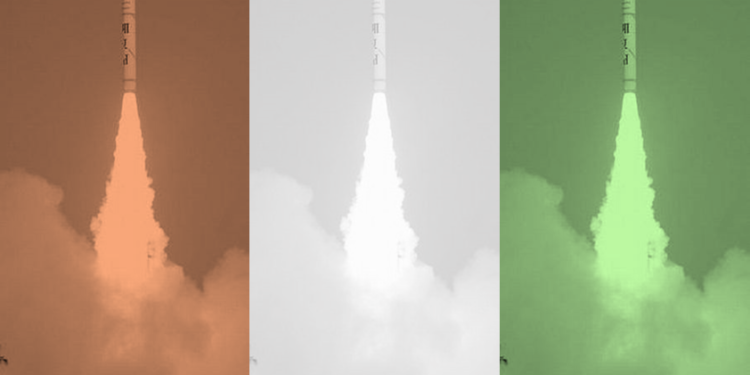On 2nd January 2017 India managed to successfully test fire the nuclear-capable ballistic missile Agni IV today. The launch came exactly a week later after India tested the Agni-V, India’s first Intercontinental ballistic missile. The missile was successfully launched from Abdul Kalam Island off Odisha coast. Agni IV fourth missile in the Agni series of missiles, a family of medium to intercontinental range ballistic missiles developed by
Supported by a mobile launcher, the surface-to-surface missile was flight tested from the Integrated Test Range (ITR) at Dr Abdul Kalam Island. This was the sixth trial of the home grown missile, the previous test was conducted on November 09, 2015, which weighs 17 tons and is 20 metre-long. According to reports, electro-optical systems and radars had been positioned along the coast of Odisha for monitoring all the parameters of the missile. Two Indian Navy ships were anchored near the target area to witness the final event.
Developed by Defense Research Development Organization, the Agni IV is Intermediate Range Ballistic Missile (IRBM) that is propelled by composite rocket motor technology. The missile is reportedly equipped with state-of-the-art avionics V-12 fifth generation On-Board Computer. The missile has two stages of solid propulsion. This fire and forget missile is navigated using a jam proof ring laser gyro based Inertial Navigation System (RINS) and supported by highly reliable redundant Micro Navigation System (MINGS), ensure that missile can reach the target within two digit accuracy.
The re-entry heat shield is capable of withstanding high temperatures that may reach as high as 4000 degree centigrade and above during reentry of the missile in earth’s atmosphere and makes sure that the avionics function normally, with inside temperature remaining less than 50-degree centigrade. The highly sophisticated surface-to-surface missile is equipped with modern and compact avionics to provide a high level of reliability.
According to the Defense Ministry, the Agni IV missile has the latest features to correct and guide itself for in-flight disturbances. The first 3 of the Agni series of missiles, Agni-I, II, III and Prithvi series of missiles, Prithvi I and Prithvi II are already inducted in the armed forces giving New Delhi an effective deterrence capability against its western neighbor Pakistan.
The Agni IV along with the upcoming Agni V & VI missiles is primarily intended to bolster India’s strategic nuclear deterrent against its northern neighbor China.
Former DRDO Scientist Ravi Gupta, told Financial express that “Monday’s test by the user adds to the confidence of India’s preparedness. “When it was developed, the Agni 4 was a major step ahead of the Agni 3 in terms of the number of new technologies it had. The success of these technologies contributed in a big way to the success of the Agni 5, in which they were used.”
The Agni IV missile provides New Delhi with a powerful deterrence and unprecedented strike power against its main regional rival Beijing. New Delhi is also developing the Agni V and VI, that are expected to strengthen India’s Nuclear deterrent against Beijing. Meanwhile, after some user trials, the Agni 5 would be ready to be inducted by the Strategic Forces Command. The Agni 5 is approximately 17-metre long and weighs about 50 tons. It can carry a nuclear warhead of more than one ton.
With Inputs from:
http://www.ndtv.com/india-news/nuclear-capable-agni-iv-missile-tested-successfully-5-facts-1644166
http://www.financialexpress.com/india-news/agni-iv-india-nuclear-capable-ballistic-missile-test-fired-successfully-drdo/493804/































